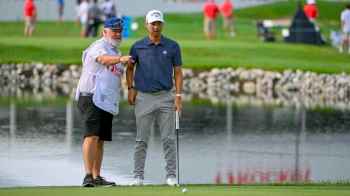Why Trump Must Now Negotiate With Iran

On Monday, after Iran targeted the largest U.S. military base in Qatar in a choreographed response to the American bombing of its nuclear facilities, President Donald Trump briskly dismissed Tehran’s attack and announced a ceasefire.
[time-brightcove not-tgx=”true”]In the short term, the U.S. leader’s declaration and subsequent lashing out against ceasefire violations might have ended the recent war between the regional rivals—but over the long term, the future of the conflict between Tehran and Tel Aviv depends on how the various parties manage what remains a brittle peace.
It is clear that, when Trump announced the ceasefire, Iran and Israel were ready to stop fighting. Israel’s military success was undisputed; it had assassinated scores of Iranian military leaders, damaged several Iranian nuclear facilities and missile sites, and dominated Iranian skies. Yet it was also incomplete, in terms of Israel’s stated goal of destroying the Iranian nuclear program; U.S. bombings pushed the program back, but reportedly only by a few months.
On the other side, although bruised and bloodied, Iran could insist on being unbowed, on holding its own with enough of its missiles penetrating the Iron Dome and other Israeli air defense systems to compel Tel Aviv and the United States to seek a ceasefire.
Yet this tenuous pause in fighting does not lay the foundations of peace. Israel has already said it will strike Iran again if it resumes its nuclear efforts. And unless there is a new comprehensive nuclear deal between Iran and the United States, Tehran is likely to seek to reassemble its nuclear program. That sets the stage for another confrontation.
It won’t happen immediately, of course. Iran needs to introspect upon the magnitude of its losses, address its immense intelligence vulnerabilities, regroup its battered military apparatus after the spate of assassinations, and more generally rebuild its defenses. Israel, meanwhile, needs to rebuild and improve its air defenses which failed to prevent Iranian missiles from striking strategic and civilian targets.
None of this, however, would stop Israel from continuing to launch lower-level attacks on Iran despite the ceasefire—applying the same strategy it has used in Lebanon despite its ceasefire with Hezbollah. Such attacks would elicit limited retaliation, as for now Iran’s focus is likely to be on recovering from the recent war.
The long road to a lasting peace
Further out, the question is: how do we go from the events of the past few weeks to real stability, not another return to war? How, in other words, does stability return to the region?
The answer hinges on two major factors—one inside Iran, and the other to do with diplomacy between the U.S. and Tehran.
Domestically, beyond replenishing and rebuilding its military capacity, for there to be stablity in the Middle East, Iran has to address its greatest vulnerability: an angry population.
Iranians have been at odds with the country’s leadership for some time. Economic hardship and isolation have taken a toll, and an increasingly large number of Iranian citizens no longer subscribe to the Islamic Republic’s revolutionary values or support its foreign policy, which they blame for the country’s isolation and economic woes.
The more ambiguously stated objective of Israel and the United States during the war was to incite the Iranians to rebel and topple the Islamic Republic. Iranians did no such thing. Yet in the coming days, domestic popular anger at Israeli aggression and the consequent material and psychological loss that Iranians have suffered is likely to lead to serious questioning of the Islamic Republic’s policies.
After all, Iranians are patriotic but they also crave peace, security, and economic prosperity. Israeli attacks killed hundreds of civilians and injured thousands more, and destroyed or damaged hundreds of homes and civilian infrastructure, including oil refineries which have led to fuel shortages. The expected conversation and contestation between the Iranian people and the Islamic Republic and the response of the regime will be important in determining how Tehran manages the ceasefire.
Beyond Iran, the ceasefire also presents a test for President Trump. He took a risk by getting the U.S. involved in the attack on Iran. As we have already seen, unease about the U.S. getting dragged into another brutal, expensive, and potentially long war in the Middle East created factures within his MAGA movement.
Now, with the ceasefire, President Trump has a direct stake in ensuring that the peace holds. To make it last, he needs to effectively manage Israel’s Prime Minister Benjamin Netanyahu, who might see benefits in breaking the ceasefire to further establish military dominance over Tehran. It is also possible that he might break it to handicap any renewed diplomatic efforts between the U.S. and Iran over the latter’s nuclear ambitions.
But that is precisely what the U.S. must do now to create a pathway for a durable peace: work towards resuming nuclear talks with Tehran.
Even after this war, Iran still possesses its stockpile of 400 kilograms of highly enriched Uranium that, if still intact, could be used to build as many as 10 nuclear bombs, according to U.S. military estimates. And it retains the expertise to rebuild its nuclear program. The speed at which Iran could move toward weaponization—if it makes that decision—depends on how much of its highly enriched uranium survived the American and Israeli bombing of nuclear sites.
To learn that, the United States has to ensure ongoing access to nuclear sites by the International Atomic Energy Agency inspectors ( the Iranian parliament has moved a bill to suspend cooperation with the IAEA). All this would have to be part of a nuclear deal.
Iran has been clearly weakened by this war but that won’t make its nuclear diplomacy with the United States straightforward or easy; it also understands that President Trump has a stake in maintaining the ceasefire and ensuring that there isn’t a resumption of a war that could easily spiral into a wider regional conflagration, exacting grave political costs for all involved.
And so, President Trump might now have to consider incentives other than coercion and the threat of further bombing Iranian nuclear sites.
This might mean offering Iran greater economic relief, giving it guarantees that the U.S. will not seek or support regime change, and provide a security guarantee against future Israeli attacks. Ultimately, the Iranians do not trust the U.S. leader. He walked away from the 2015 nuclear deal and allowed Israel to attack Iran while he was still negotiating a nuclear deal with Tehran. So the bar for him to win their trust is very high.
This fraught history is bound to make renewed nuclear negotiations more difficult. Still, Iran needs to address its economic challenges, and Trump could offer the incentive of sanctions relief, guarantee that it would happen quickly, and won’t be easily reversed. And Trump too needs a deal to avoid the risk of entering the United States into yet another war. Successful nuclear diplomacy—hard as it might be—is still possible, and remains the best option for both Iran and the United States.



